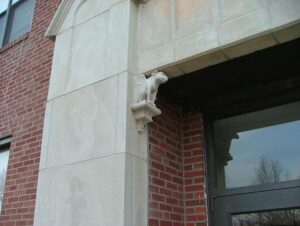Are you looking for something to entertain your visiting relatives? HCHM Director, Catherine, has a knack for finding the out of the way treasures to visit in Kansas. Although this Director’s Tale is based on a trip taken in the spring, fall can also be a beautiful to time visit.
Director’s Tales
by Catherine Graves, HCHM Director
The act of writing is something that is not very comfortable with me, but when the idea was approached a time or two, or seven, I decided, meh? What would it hurt??
Then I thought to myself. . . Self? What would we even write about? The only thing that would be of any interest would be the small little adventures that I may or may not force my child to attend. The crazy thought occurred to me a few years back when I stumbled across the 7 Wonders of Kansas book. Looking inside, I realized that there were so many little places here in our state that were interesting!
I’ll begin with one of our first places we explored. Tallgrass Prairie Preserve. The boy had never been, and I took a field trip there when I was in elementary school. It was a nice, beautiful, picture perfect, humid Kansas spring day, so we slathered on a hefty amount of sunscreen. Being a couple of redheads, it is a very common practice. (Maybe I should buy stock in the stuff. . .😊)
Besides being in boots and jeans, (I was overly prepared in case of those rattle snakes decided to make a surprise visit), the boy was blown away to see the bison in real life and relatively close. At first it took a minute for our eyes to adjust and focus on those big boulder-like creatures in the pasture. What a sight to see.
Fortunately, our allergies weren’t going crazy, and the wind did help cope with the heat, but singing Home on The Range felt a bit different that day. It was nice to give him the visual to the lyrics of our state’s song.
After the journey back down the trail, we decided to walk over to the house itself. It is a beautiful limestone mansion built in the 1880s. Next to the mansion, you can visit the barn also, made of limestone. Just down the way a bit, you can head on over to the Lower Fox Creek Schoolhouse. We didn’t go that far because we may have been out in the sun a tad too long…
Either way, if you need a little get away that is FREE, and you’re up for some hiking, we recommend heading on over to Strong City. It truly is a beautiful sight to see. Don’t forget some water and sunscreen!
2 out of 2 gingers would recommend, on a cooler day of course.
Happy trails!!











